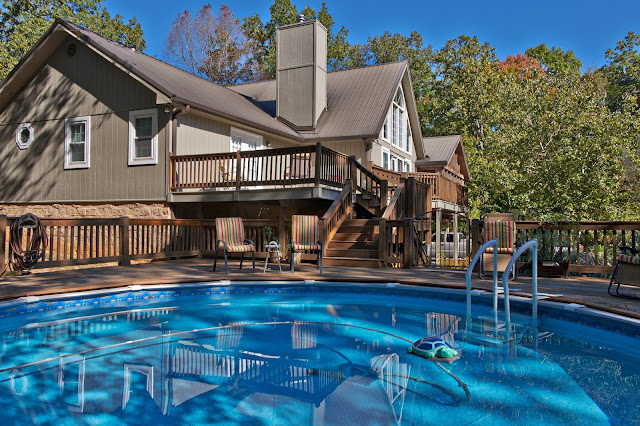Pool and Southeast Elevation of My Former Home
(Made for the Realtor)
Fuji X-T1 camera, Fuji XC 16-50 f3.5-5.6 lens
Technique, as it applies to photography, consists of decisions about such matters as camera and lens selection, ISO, shutter speed, aperture, angle of view, point of focus, distance to subject, etc. As the great Fritz Henle, master of the Rolleiflex, said, "...seeing pictures is always tied up with technique...it is important to decide things like sharpness or unsharpness and not let them happen accidentally. It is equally important to command the techniques that get the effects you want."
In these days of auto-focus, auto-exposure, do-everything cameras, learning good technique may not seem all that important. After all, anyone can pick up a modern camera and make sharp, well-exposed pictures. And for many, that's good enough. But if you want to make photographs that are truly your own, you need to learn to control every part of the picture-making process.
One of the things I especially dislike is the minimum depth-of-field trend -- shooting all photos at the lens's maximum aperture. This is certainly a valid technique -- for some photos. It's good to know how to throw a background -- or a foreground -- out of focus, when it's appropriate for the subject matter. But not every photo. For most of my photos I want more, rather than less, depth-of-field. As Henle said, "it is important to decide things. . .and not let them happen accidentally.
In the photo above, showing the pool and rear of our former home, I used a wide-angle zoom lens (24mm equivalent), which has inherent depth-of-field. I then used an aperture of f11, to increase depth-of-field even more to ensure that both the pool in the foreground and the far corner of the house were in the plane of acceptable sharpness.
If you're happy with letting your camera make technical decisions for you, enjoy. If you want to become a better photographer, learn to make these decisions yourself, or at least check the settings your camera recommends and see if they are what you want. For instance, I usually keep my X-Pro1 set on Program. But before I shoot, I usually check the settings the program is giving me and make changes if I don't like what I see.
Photograph and text copyright 2021, David B.Jenkins.
I post Monday, Wednesday, and Friday each week unless life gets in the way.
Soli Gloria Deo
For the glory of God alone

No comments:
Post a Comment